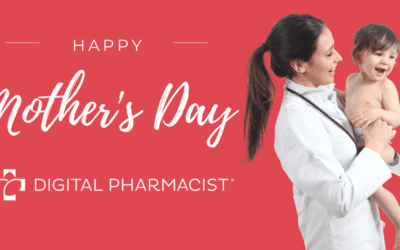Pharmacy Marketing goes far beyond a storefront. It’s an essential channel that drives sales and attracts customers. Most businesses wouldn’t exist without a marketing plan, and pharmacies are no exception.
Marketing identifies people that need your services and lets them know that you are there, what you offer, and how you can help them. For independent pharmacies, it helps you connect with local communities and offer essential services so you can care for patients.
In this post, we break down the fundamentals of marketing crucial for every pharmacy so that you can measure your own marketing efforts and discover new opportunities.
Establish Your Pharmacy Brand
Regardless of which tactics you decide to use for your pharmacy, a great brand is essential to any good marketing plan. A “brand” is the public perception of a company and its offerings. Your brand, in other words, is what prospective customers think of when they hear your name, see your products or branded services, and remember the experience they’ve had with you. A brand is much more than a single logo or name, it’s a multi-dimensional experience.
However, to start at the beginning, here are the basic components of a brand:
- Name
- Design or identity (logo, color scheme, etc.)
- Messaging
- Online presence
There are a lot of intangibles that go into building a complete brand but perhaps the most important is having a clear vision or mission and value statement for your brand. One of the many unique qualities of independent pharmacies is their family histories and connections to their local community, both foundations of a complete brand.
Consider a Digital Approach
%
of Americans use the internet daily
%
of Americans use social media
%
of internet users use search engines at least once a month
Now that over 90% of Americans are online daily, digital marketing is essential for any business. Unlike traditional marketing, which includes offline methods like print, broadcast, and direct mail, digital marketing is any form of marketing conducted online, including your website, social media channels, and email. It allows businesses to reach larger audiences, interact with prospective customers, and track their efforts efficiently.
Digital marketing is generally made up of push or outbound strategies, which promote you to a relevant audience and pull or inbound strategies, which drive people towards your products or services.
The main elements of digital marketing include:
- Website
- Search Engine Optimization (SEO)
- Content (written or multimedia)
- Social media
- Paid Ads
What Makes a Good Pharmacy Website
In the digital age, having a website is crucial for accessibility, which gives your customers the ability to contact you and learn about your business.
Any good company website includes:
- Company and contact information
- Logo and branding
- Product or service information
- Easy navigation
- Social media channel links
- Mobile optimization
As a pharmacy, you want your website to reflect your business. Consider offering an online prescription refill service and secure messaging options for your customers. You may also want a blog or other platform to share health news and updates.
To learn more, here’s our blog on best practices for your pharmacy website.
Leveraging SEO and Local SEO
When a customer searches for your business name or a local pharmacy online, you want your location to show up first. Search Engine Optimization (SEO) helps position your content in search engine results using keywords to draw people to your website.
But your goal is foot traffic, not just web traffic. That’s where local SEO comes in.
Local SEO helps your pharmacy show up in local results for searches like “pharmacies near me” and “pharmacies in [YOUR TOWN].” You can do this by including location keywords, maps, and directions to your website and adding search listings like Google My Business.
How Advertising Can Work for Pharmacies
Traditional ads are found in newspapers, magazines, on billboards, and through direct mail. They can help you target local audiences and have instant visual and tangible appeal.
Like digital marketing, digital ads refer to campaigns through online platforms. They can draw larger audiences than traditional methods, are more cost-effective and easier to measure, and have a higher capacity for audience engagement.
Broadcast ads now straddle both worlds as podcast and video streaming platform advertising becomes more popular.
Common digital ad types:
- Social media. Paid campaigns you can buy to reach specific audiences on social media. Facebook, the most popular social media platform, offers a range of multimedia ad options and is often the best platform to begin advertising on.
- Search engine marketing (SEM). The practice of buying “space” from Google so they show your ad next to search results is a great strategy for brick-and-mortar businesses.
- Display Ads. Graphics-based, multimedia banners that appear on social media platforms, websites, and even apps.
At Digital Pharmacist, we offer expert social media ad management to help you get the most out of your advertising budget.
Getting Your Pharmacy on Social Media
Social media is one of the best ways to maintain a community presence. Done correctly, effective use of social media will allow your customers to feel a personal connection to your pharmacy’s brand.
The most popular social media platforms are:
- The biggest social media platform, optimized for both web and mobile with streamlined business pages and a company search option. A great platform to connect with customers of all demographics, highlight promotions, and share news and events.
- An image and video-based platform connected to Facebook that’s popular with younger users. Works well for staff profiles and behind-the-scenes posts, and cross-platform ad campaigns.
- A fast-paced content platform with a 280-character limit for each post, great for frequent updates and community engagement with patients and industry professionals.
Best practices for posting, including times to post and frequency, depend on your industry and audience. According to Sprout Social, however, healthcare practices will find mid-week before early afternoon the most popular post times with the highest engagement on all three platforms.
When it comes to frequency, there are plenty of opinions on the right way to do things, but knowing your audience and practicing consistency can go a long way to building your online presence.
The Ins and Outs of Reviews
There are many sites that offer business reviews, but some of the most recognizable are Google, Yelp, Angie’s List, Facebook, and Yellowpages. Just remember that customers can leave a review anywhere you are visible online, such as your website and social media pages.
According to a BrightLocal survey, 91% of consumers are more likely to buy from a business with positive reviews. Knowing how to manage your online reputation and respond to reviews is crucial.
- Set up automated alerts for reviews and monitor your social media channels.
- Respond to all reviews, positive or negative.
- Make sure your responses are polite, understanding, and help customers resolve their specific concerns.
Struggling with reputation management? We help independent pharmacies achieve positive reviews and prevent negative ones.
Ideas to Get Started With Today
It takes time, patience, and effort to develop a marketing plan that works for your business, and it’s hard to know where to begin.
Here are a few to get you started:
- Write down your pharmacy’s back story and mission or top 3 values and add them to your website.
- Create accounts for any social media channel you are not currently active on and make sure bio has your pharmacy information.
- Set up a Google My Business, Bing Places, and Apple Maps listing for your pharmacy.


